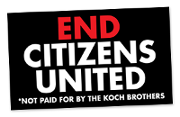Biblio
(1998). Designing XML Internet Applications.
(1998). Java Distributed Computing.
(1998). Java Security.
(1998). Linux Application Development.
(1998). LINUX Network Toolkit.
(1998). Org Behv&perfm.
(1998). Thinking in Java.
(1998). UML in a Nutshell.
(1998). The Xml Companion.
(1998). The Age of Unreason.
"Organizations are not by nature forgiving places. Mistakes are magnified by myth and engraved in reports and appraisals, to be neither forgotten nor forgiven. Organizational halos are for sinners as well as saints and last for a long time. The new manager must be a different manager. He, and increasingly she, must use what, in psychological jargon, is called reinforcement theory, applauding success and forgiving failure; he or she must use mistakes as opportunities for learning, something only possible if the mistake is truly forgiven because otherwise the lesson is heard as a reprimand, not an offer of help...The new manager has to be a teacher, counselor, and friend, as much as or more than he or she is commander, inspector, and judge." (p. 131)
(1998). Anger Kills: Seventeen Strategies for Controlling the Hostility That Can Harm Your Health.
"By allowing yourself a range of strategies—both asserting and deflecting options—you can balance your twin goals of preventing petty matters from riling you and remain focused on your legitimate rights and those of others. Sometimes you may choose to take a stand for what is right; at other times you may prefer to tune out the situation. Real injustices do exist in the world. The goal in learning to control your hostility is not to become insensitive to all injustices but rather to become more focused and selective." (p. 148)
(1998). The Bad Attitude Survival Guide: Essential Tools For Managers.
"A consistent, knee-jerk negative response to bad news or negative circumstances is a common occurrence and creates an unhealthy organizational culture. Many organizations are well known for shooting the messenger. Some managers have such a high negative emotional response to problems or bad news, their employees learn to avoid their manager in times of trouble or crisis. This is a deadly organizational circumstance because information that frequently could serve to eliminate a problem or stop a small crisis from escalation isn't shared up the ladder, as lower-level employees refuse to expose themselves to the inevitable wrath. The price the organization pays for allowing this negative culture is incalculable." (p. 79)
(1998). The Critical 14 Years Of Your Professional Life.
"What are the bosses' strengths and weaknesses?
We all have them. Usually, our weaknesses outnumber our strengths. When you do a strengths/weaknesses 'audit' of the boss, be prepared for the weakness column to extend beyond the strengths. Once I got savvy about the world of bosses, I considered it a major strength that the executive simply was breathing. The higher you put your standards for how bosses should act, the harder you're going to fall when a particular boss doesn't measure up. Remember breathing—it's a major strength." (p. 60)
We all have them. Usually, our weaknesses outnumber our strengths. When you do a strengths/weaknesses 'audit' of the boss, be prepared for the weakness column to extend beyond the strengths. Once I got savvy about the world of bosses, I considered it a major strength that the executive simply was breathing. The higher you put your standards for how bosses should act, the harder you're going to fall when a particular boss doesn't measure up. Remember breathing—it's a major strength." (p. 60)
(C)2014 CC-BY-NC 3.0, workcreatively.org











 ]
]